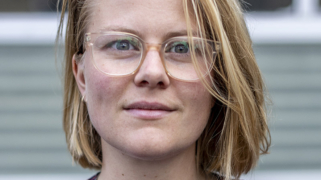Lab2: A Lab of Labs
First published in The Stanford Social Innovation Review
Just add water. That was chemistry professor Justus von Liebig’s big idea. Mix hot water and powder, and voilà, you have the nutritional equivalent of beef stew. The year was 1824. The setting was one of the first modern science laboratories. The problem was malnutrition. Professor von Liebig and his students came up with a solution: a new product called concentrated beef stock. Only it turned out that Professor von Liebig’s solution was rather expensive to mass-produce—so expensive that manufacturers altered the product and its intent. A nutritional supplement became a flavor—marketable, yes, but no longer a solution to the original problem. James Suroweicki of The New Yorker reminds us that inventions—like concentrated beef stock—aren’t by themselves innovative. An innovation changes the systems around an invention so that it can spread with some sort of fidelity.
The dilemma faced by von Liebig is the same dilemma faced by lots of us social innovators. Social innovation laboratories are the new “it” vehicles for social change. Like their scientific counterparts, they are spaces for naming problems, testing hypotheses, and developing solutions, often in the form of new products, new services, and new networks. And yet how does the laboratory become a platform for innovation and not just a breeding ground for new inventions? In other words, how do we spark wider behavioral and systemic change outside the lab? What are our methods for and assumptions about how such change happens? What changes are labs actually helping to bring about?
Lab2
These are some of the head-scratching questions we grappled with back in April, during two days in an Amsterdam living room. Lab2 was an event that brought together 40 folks from social innovation labs, hubs, and centers in 15 countries, along with a handful of academics, funders, and government insiders. Organized by Kennisland, Hivos and the Social Innovation Exchange, we aimed to cut the bullshit, get underneath the rhetoric, and talk about what we do and how we could do better.
Stéphane Vincent and Anna Lorchard openly talked about La 27e Region’s efforts to build social innovation laboratories within France’s regional government. Their hunch is that systemic change won’t come from any one new product or service, but from shifting the culture of public administration. Their method is a two-year capacity-building project, run in four regions simultaneously, to transfer user-centered design methods to public servants and generate political momentum for organizing work differently. Unsurprisingly, not everything has worked—two of the four regions are struggling to embed the thinking and practice. And Stéphane and Anna wondered aloud whether user-centered design methods are a fad that will soon be eclipsed by the next best thing.
Mariko Takeuchi from the Human Centered Design Innovation Lab in Cambodia also questioned how to embed user-centered thinking and practice within bureaucratic organizations – specifically, international aid agencies that too often distribute and account for funding in ways antithetical to bottom-up work. Mariko’s hunch is that awareness of and exposure to pro-poor design methodologies will prompt systemic change. Her methods are on-the-ground projects to demonstrate how much money you can both save and earn when you start with observing and talking to the rural poor. By spending time with families in villages, her team discovered that daughters working in big-city factories facilitated the take-up of new toilet technologies at home. This insight is changing how the toilets are priced and marketed.
Daudi Were from Ushahidi in Kenya shared the organization’s efforts to enable mass take-up of new information technologies. Back in 2008, during Kenya’s election unrest, it developed a website to track election violence—in about 48 hours. Ushahidi’s hunch is that information, collected and visualized, can prompt a tipping point for citizen action. Its methods are new technologies, and supports for local coders and entrepreneurs. The team is constantly on the lookout for new strategies to bring together entrepreneurs, human rights activists, coders, and government staff.
Systems Change and Deep Learning
These are just 3 of the 21 sets of “hunches” and “methods” we batted around during our two days together. But when it came to batting around results, there was far less to report. Most of us could highlight the outputs of our work—reports, recommendations, websites, apps, blueprints, learning communities—but far fewer of us could point to tangible examples of systems change. For all of our activity and intent, it still remained unclear whether we are altering the dominant systems and actually enabling a different set of outcomes on the ground, or whether we have the stamina.
Rob von Pagee from the Dutch nonprofit Eigen Kracht thinks it takes at least 21 years to change dominant systems—and he’s only in year 14. For the past 14 years, Rob and his colleagues have been spreading a New Zealand invention in the Netherlands called Family Group Conferences. During these conferences, families have the opportunity to create their own action plans, rather than having professionals from child protection or other crisis services make one for them. Only in the last six years has Eigen Kracht reached a tipping point. Growing evidence of the efficacy of the invention, combined with a favorable political climate and some strong internal champions, have propelled the practice forward.
“If we want deep systemic change, we also need deep and ongoing learning.”
Perhaps, then, the question isn’t whether social innovation laboratories are creating change in the short-term, but how we can support each other to create change over the long-term. If we want deep systemic change, we also need deep and ongoing learning.
Deep learning is more than information sharing. And it’s more than networking. It’s about critical reflection—the kind of reflection that helps you to identify your underlying assumptions about what you do and why, and leads you to try on and live out some new perspectives.
We find that it’s pretty difficult to engage in critical reflection when we’re in a “selling” and “persuasion” mode—that is, the mode we’re often in when we go to social innovation conferences, meet funders, and reach out to potential partners and colleagues.
Our experience organizing Lab2 led us to develop a few hunches about how to get us in a reflective mode. Indeed, we think it has something to do with the rigor of the content and the intentionality of the learning environment.
The Rigor of the Content
We found that good, reflective conversations were a blend between three types of content: historical analysis, theoretical debate, and live case studies. We also found that this content required serious curation—putting it in a form that participants could quickly imbibe and digest. To do this, we applied the same user-centered design methods from our external projects to our internal learning process.
Historical analysis
So often we focus on the gap between the present day and our imagined futures, we don’t pause to understand the gap between the past and the present day. Until we organized Lab2, we had no idea that philosopher John Dewey set up a living lab in a Chicago elementary school in 1896. Extracting the lessons learned offered a rich starting point for discussion and imagination.
Theoretical debate
Theory offered another rich starting point. We drew on the work of Frances Westley, from the University of Waterloo, about what defines a social innovation lab and the six pathways to scale. We did this not because we viewed her theory as definitive, but because it offered a common language to compare our real world experiences and put forward alternative points of view.
Live case studies
History and theory served as a nice contrast to the third type of content: live case studies. Rather than talk about our work in the abstract, we asked participants to bring in their real work product. Our goal was to take the physical artifacts from our work—for example, a process diagram, report we produced, or photo of a training we ran—and honestly debrief about both form and functionality. This was still tough to do; plenty of folks wanted to offer a summary of their work, rather than deconstruct the actual thing.
The Intentionality of the Learning Environment
Changing the routines around what we share also means changing the routines around where we share, with whom we share, and how we share.
Where we share
If we want people to openly and honestly self-disclose their work products, we need to create a space that feels open and honest. So we borrowed some couches, old picture frames, and lamps, and created a living room space. It helped. Participants remarked how comfortable they felt. We broke down some of the barriers between the personal and the professional.
With whom we share
Mixing up professional networks is another way to break through the same old same old. We brought together two different communities—the international development community and the social innovation community. Our ambitions are similar. But our different reference points, language, and contexts meant we really had to listen before talking. The focus was mutual understanding, rather than one-upmanship or show.
How we share
Achieving mutual understanding requires allocating the time for playing back what you heard, and giving and getting feedback from one another. We tried a number of different modalities for playback, including writing postcards and letters, going for a walk outside, recording short snippets of film, documenting small group conversations on large wooden panels, and illustrating reoccurring ideas. Some prompted deeper sharing, others didn’t, but the variety enabled people to engage in ways that worked for them.
The Future of Deep Learning
If we want to create spaces that truly allow deep learning, there is plenty we can draw from the fields of adult learning (andragogy), self-directed learning, and transformative learning. When you drill down on all these different words, what you find is a rich body of work on the conditions for critical reflection—about how to tap into our real-world experience, extract key insights and emotions, and try on fresh ways of seeing and doing.
Rather than put time and money into another conference, networking event, or workshop for social innovators, Lab2 has helped us see the value in developing new approaches for in-context learning and regular feedback. Approaches that aren’t just relevant to those of us who run labs, but to all of us invested in social change. What would it look like if we brought together Socratic methods, field trips, and peer buddies? Or if we weaved together elements from support groups, debating societies, book clubs, online education, and portfolio showcases? Could these “mash-up” approaches help us build the collective intelligence and stamina to innovate and not just invent?
Sarah Schulman is a visiting scholar at Kennisland in Amsterdam, where she is also starting up In With Forward—a platform of stories, tactics, and projects to enable social good. From 2009-2012, Sarah co-ran InWithFor, a social change laboratory that co-designed and prototyped three new social services in Australia, including the award-winning Family by Family.
Thanks to Marlieke Kieboom, Kennisland, and Remko Berkhout, Hivos, for their contributions to this piece. Kennisland conducts research, advises, and develops interventions for a strong knowledge society. Hivos is an international development organization working towards a free, fair, and sustainable world. Learn more about Lab2.




